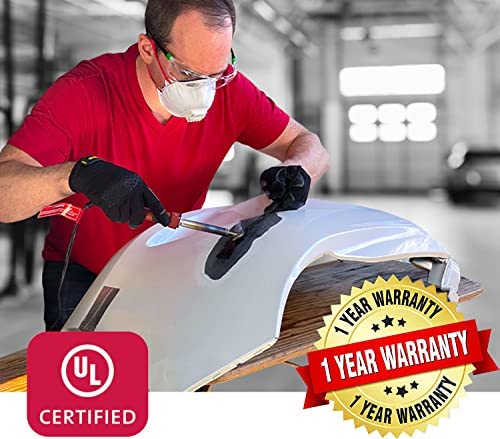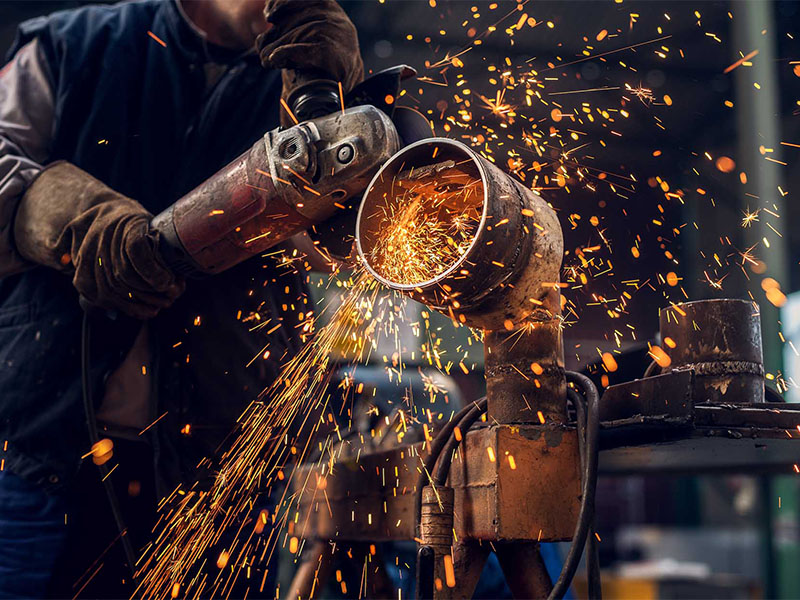Everything about Welding: Trick Insights Into Techniques and Best Practices for Success
Welding includes a range of methods, each fit for certain materials and applications. Understanding these methods, such as GMAW, SMAW, and TIG, is vital for accomplishing optimal results. Moreover, the best equipment and security techniques can not be forgotten. As prep work and repairing play critical duties in the welding procedure, mastering these elements can substantially improve the top quality of the final product. What are the vital elements that guarantee an effective weld?
Understanding Various Welding Techniques
Welding methods encompass a selection of methods, each matched to details applications and products. Amongst the most typical techniques are Gas Steel Arc Welding (GMAW), Protected Steel Arc Welding (SMAW), and Tungsten Inert Gas Welding (TIG) GMAW, likewise referred to as MIG welding, is prominent for its speed and versatility, making it ideal for slim materials. SMAW, or stick welding, is preferred for its simplicity and performance in outdoor environments, particularly with thicker steels. TIG welding provides accuracy and control, making it suitable for intricate job and non-ferrous metals (Montana Mobile Welding and Repair Fabrication). Each method has its unique benefits and factors to consider, enabling welders to choose the very best approach based on the project's demands, material type, and desired outcomes. Understanding these strategies is important for successful welding
Important Welding Equipment and Tools
While various welding methods call for particular skills, the ideal tools and devices are similarly vital for accomplishing top quality results. Important welding equipment includes welding machines, which differ depending on the strategy-- such as MIG, TIG, or stick welding. Protective gear, including gloves, aprons, and helmets, guarantees safety and comfort during the process. Furthermore, components and clamps assist protect materials in location, guaranteeing accuracy in welds. Consumables like welding poles, cord, and shielding gas are additionally crucial components that influence the high quality of the weld. Devices such as grinders and cutters promote surface preparation and post-weld completing, adding to an expert result. Buying high-grade tools inevitably enhances the efficiency and effectiveness of welding tasks.
Safety Practices in Welding
Proper safety and security techniques are crucial in the welding industry to secure employees from prospective hazards. Welders need to wear ideal personal safety equipment (PPE), consisting of headgears with correct shading, handwear covers, and flame-resistant garments. Ample ventilation is essential to reduce direct exposure to damaging fumes and gases produced during the welding process. In addition, employees must be learnt the correct handling of welding devices to stop mishaps. Fire security measures, such as maintaining combustible materials away from the welding area and having fire extinguishers conveniently available, are needed. Routine inspections of equipment and offices can aid identify prospective threats before they lead to accidents. By adhering to these safety and security practices, welders can produce a safer working atmosphere and minimize risks connected with their trade.
Readying Materials for Welding
Preparing materials for welding is a crucial action that greatly affects the quality and honesty of the end product (Montana Mobile Welding and Repair Belgrade Fabrication). Correct preparation entails cleaning the surfaces to remove impurities such as oil, corrosion, and dirt, which can jeopardize the weld. Methods such as grinding, fining sand, or using solvents are commonly employed to attain a tidy surface. Additionally, guaranteeing that the materials mesh comfortably is necessary; spaces can cause weak welds. It's also vital to think about the positioning and positioning of the components, as this will certainly influence the simplicity of welding and the final outcome. Finally, selecting the suitable filler product and ensuring compatibility with the base steels is crucial for achieving strong, durable welds
Tips for Achieving High-Quality Welds
Accomplishing premium welds calls for focus to detail and adherence to ideal practices throughout the welding procedure. Proper joint prep work is crucial, guaranteeing surfaces are clean and free from impurities. Choosing the proper filler product and welding strategy based upon the base metals is critical for suitable bonding. Keeping consistent travel speed and angle while welding can promote and avoid problems harmony. In addition, controlling heat input is important; extreme heat can result in warping and damaged joints. Regularly inspecting the welds throughout the process enables prompt changes if necessary. Employing appropriate post-weld treatments, such as cleansing and anxiety relief, can enhance the resilience and stability of the weld, eventually making sure an effective end result.
Fixing Typical Welding Issues
Welding frequently presents challenges that can influence the top quality and integrity of the last product. Usual problems such as porosity, inconsistent weld grains, and overheating can develop, each requiring specific troubleshooting methods. Comprehending these troubles is necessary for welders to boost their abilities and attain perfect outcomes.
Porosity Troubles Explained
Although porosity can frequently be forgotten, it stays a vital concern in welding that can compromise the stability of more a completed product. Porosity refers to the existence of tiny gas pockets within the weld grain, which can lead and damage the joint to premature failing. This trouble typically occurs from pollutants, moisture, or incorrect protecting gas coverage during the welding procedure. To alleviate porosity, welders must verify that the base products are clean and completely dry, make use of proper securing gases, and keep regular welding parameters. Routinely evaluating the equipment and environment can also help identify prospective issues prior to they manifest in the weld. Addressing porosity successfully is necessary for attaining solid, durable welds that meet top quality requirements.

Inconsistent Weld Beans
Inconsistent weld beads can considerably impact the top quality and stamina of an ended up product. Various factors add to this problem, including inappropriate travel rate, inaccurate amperage setups, and irregular electrode angles. When the welder relocates as well promptly, a bead might show up slim and do not have infiltration, while relocating too gradually can trigger too much accumulation. Additionally, making use of the wrong amperage can result in either damaging or excessive spatter, both of which concession weld stability. The welder's technique, such as inconsistent lantern movement, can also lead to unequal grain look. To reduce these problems, welders must concentrate on preserving constant, controlled motions and making sure appropriate tools settings to accomplish harmony in their welds. Consistency is crucial to attaining trusted and solid welds.
Overheating and Bending Issues
Too much heat during the welding procedure can cause considerable getting too hot and deforming problems, influencing the structural stability of the workpiece. These issues often show up as distortion, which can jeopardize placement and fit-up, making more setting up challenging. Factors adding to overheating include the selection of welding specifications, such as voltage and travel rate, in addition to the kind of material being bonded. To alleviate these problems, welders must keep regular travel rate and suitable warmth input while keeping an eye on the workpiece temperature level. Furthermore, pre-heating or post-weld heat treatment can help alleviate tensions triggered by fast air conditioning - Montana Mobile Welding and Repair Belgrade. Regular assessment and adherence to finest practices are crucial in protecting against getting too hot and making certain the longevity go to these guys and dependability of welded structures
Frequently Asked Questions
What Are the Occupation Opportunities in the Welding Industry?
The welding market supplies diverse occupation opportunities, including placements as welders, engineers, educators, and assessors. Professionals can operate in manufacturing, building and construction, aerospace, and auto sectors, gaining from solid demand and competitive wages in various duties.
How Can I Improve My Welding Speed Without Giving Up Quality?
To improve welding speed without sacrificing high quality, one must exercise efficient methods, preserve equipment, maximize setups, and improve hand-eye sychronisation. Normal training and seeking comments can additionally significantly add to achieving quicker, top quality welds.
What Qualifications Are Readily Available for Welders?
Countless qualifications exist for welders, consisting of those from the American Welding Culture (AWS), the National Center for Building Education And Learning and Research Study (NCCER), and different industry-specific companies. These credentials enhance employability and show ability effectiveness.
Just How Does Welding Affect the Properties of Metals?
Welding affects the properties of steels by changing their microstructure, which can lead to modifications in toughness, ductility, and solidity. Heat input and cooling prices during the procedure substantially affect these material features.
Can I Bonded Dissimilar Metals With Each Other?
